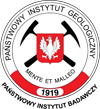Państwowy Instytut Geologiczny - PIB, Warszawa, ul. Rakowiecka 4 (Sala Rühlego)
\n\nMultiscale imaging down to the nanometer scale in conventional and unconventional reservoirs16 kwietnia 2013Warszawa\n
FEI EUROPE, Europe NanoPort, Achtseweg Noord 5, Bldg, 5651 GG Eindhoven, The Netherlands
Warsztaty z zastosowania elektronowego mikroskopu skaningowego (FIB/SEM) w badaniach konwencjonalnych i niekonwencjonalnych skał zbiornikowych
które poprowadzi Alan R. Butcher
Zajęcia odbędą się w języku angielskim
Wstęp wolny
KONTAKT I DODATKOWE INFORMACJE
Ten adres pocztowy jest chroniony przed spamowaniem. Aby go zobaczyć, konieczne jest włączenie w przeglądarce obsługi JavaScript.
Ten adres pocztowy jest chroniony przed spamowaniem. Aby go zobaczyć, konieczne jest włączenie w przeglądarce obsługi JavaScript.
TOPICS
Development of shale plays created a need for higher resolution imaging. Conventional imaging techniques were no longer able to resolve pore networks down to the nanometer scale. FIB/SEM, while originally developed for the semiconductor industry, now moves into O&G applications because of its ability to create three-dimensional datasets with nanometer scale resolution. Interestingly, FIB/SEM technology is also attraction attention from researchers in conventional reservoirs; for instance to study microporous regions in carbonates.
This talk explains the technology of FIB/SEM and presents many applications both in conventional and unconventional reservoirs. Current challenges are tackled such as the limited volumes imaged; anisotropy of the dataset and throughput improvements. Emphasis is put on integrating this technology with other imaging techniques to come to a more complete understanding of reservoir characteristics.
FIB/SEM combines the high resolution 2D images of a scanning electron microscope (SEM) with the precise cutting capability of a Focused Ion Beam (FIB). The FIB removes carefully controlled amounts of material to create 2D sections, parallel and aligned, with inter-section spacing of the order of 10nm. Each 2D section is imaged with the SEM. In this way, after careful combination of the subsequent slices, a 3D model with SEM resolution in the XY direction and 10nm in the z-direction is obtained.
Another capability of the electron beam is mineral classification. The electron beam induces X-rays that are characteristic of the phase irradiated by the beam. Comparing the energy dispersive X-ray (EDX) spectrum with a library of phases transforms the typical grey-level SEM images into powerful mineral maps. Examples of mineral maps of the full core surface are used to judge heterogeneity of the sample and this leads to a better insight where to perform 3D imaging by FIB/SEM.
SPEAKER BIOGRAPHY
Alan R. Butcher is a geologist with a specialization in rocks of commercial importance. He started off as an Igneous Petrologist but his experience has grown to include Geochronology, Applied Mineralogy, Ore Deposit Geology, and Forensic Geoscience. Alan has also worked on Moon rocks with NASA. He is best known for his work within the field of Automated Mineralogy & Petrography, particularly in the areas of Process Mineralogy & Reservoir Petrography. Specifically, Alan has more than 15 years experience with the QEMSCAN and MLA – the world's most advanced, fully automated mineral and petrographic analysis technologies. Recently, Alan has been involved in 2D-3D-4D mineralogy, which integrates electron beam and ion beam analysis (DualBeam) with micro-CT. In 2011, he was part of a team that developed a mobile QEMSCAN that can work in remote locations such as well sites. He is a co-recipient of the 2011 American Association of Petroleum Geologists' AI Levorsen Memorial Award, in recognition of a paper on the diagenesis of the Marcellus Shale in north-eastern Pennsylvania. He is a fellow of the Geological Society of London, holds a PhD in Geology, and is Principal Petrologist at FEI Natural Resources.
PROGRAM
09:00 Arrival and introduction
09:15–10:30 Multiscale imaging down to the nanometer scale in conventional and unconventional reservoirs
10:30–11:00 Coffee break and networking
11:00–12:15 Multiscale imaging continued with focus on large scale mineral maps of rocks
12:15–13:00 Discussion and questions








 Subskrybuj kanał RSS
Subskrybuj kanał RSS